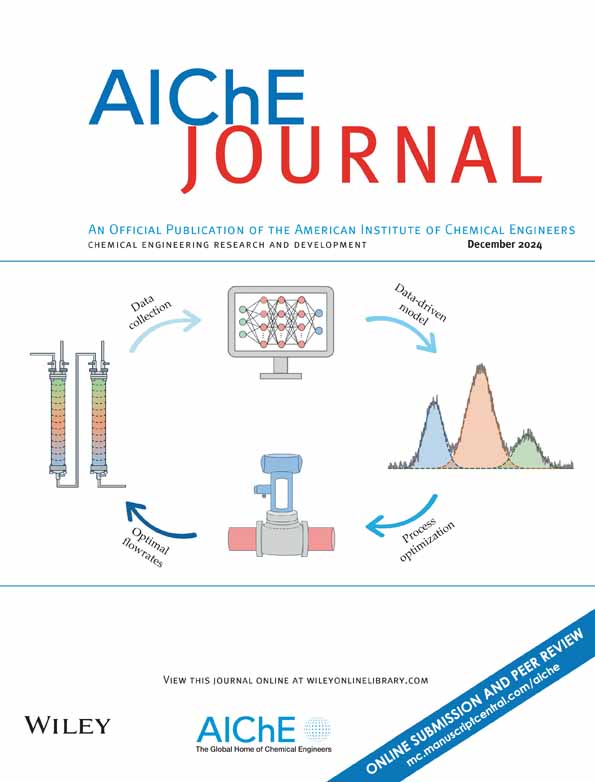碳层相互作用强度与烯烃氢甲酰化催化活性的火山关系
IF 3.5
3区 工程技术
Q2 ENGINEERING, CHEMICAL
引用次数: 0
摘要
金属-载体相互作用(MSI)对于设计具有高催化活性和选择性的负载型金属催化剂具有重要意义。在本研究中,基于通道限制策略有效地调节了铠装钴纳米颗粒催化剂(Co@xC)中Co与碳层之间的MSI。值得注意的是,催化剂的MSI强度与反应速率常数之间存在直接的火山关系。合适MSI强度的Co@2.5C催化剂在1-己烯氢甲酰化反应中实现了完全的1-己烯转化(100%),庚醛的产率为17,161 mol kgCo−1 h−1。进一步的原位/非原位表征结合理论计算证实,适当的MSI加速了电子从碳原子到Co位点的转移,从而增强了对1-己烯的吸附,提高了反应动力学(一级反应速率常数为0.017 min−1)。本文研究的火山构造-活动关系对工业催化剂的开发具有指导意义。本文章由计算机程序翻译,如有差异,请以英文原文为准。
Volcanic relationship between Co-carbon layer interaction strength and catalytic activity for olefin hydroformylation
Metal-support interaction (MSI) is of great significance for designing the supported metal catalysts with high catalytic activity and selectivity. In this work, the MSI between Co and the carbon layer in armored cobalt nanoparticle catalysts (Co@xC) is effectively regulated based on the channel confinement strategy. Notably, a direct volcanic relationship could be obtained between the MSI strength of catalysts and the reaction rate constant. The Co@2.5C catalyst with suitable MSI strength achieves complete 1-hexene conversion (100%) and the yield of heptanal is 17,161 mol kgCo−1 h−1 during the 1-hexene hydroformylation reaction. Further in situ/ex situ characterizations combined with theoretical calculations confirm the appropriate MSI accelerates the electron transfer from the carbon atom to the Co site, thereby enhancing the adsorption of 1-hexene species and boosting the reaction kinetics (the first-order reaction rate constant is 0.017 min−1). The volcanic structure-activity relationship in this work exhibits guiding significance for the development of industrial catalysts.
求助全文
通过发布文献求助,成功后即可免费获取论文全文。
去求助
来源期刊

AIChE Journal
工程技术-工程:化工
CiteScore
7.10
自引率
10.80%
发文量
411
审稿时长
3.6 months
期刊介绍:
The AIChE Journal is the premier research monthly in chemical engineering and related fields. This peer-reviewed and broad-based journal reports on the most important and latest technological advances in core areas of chemical engineering as well as in other relevant engineering disciplines. To keep abreast with the progressive outlook of the profession, the Journal has been expanding the scope of its editorial contents to include such fast developing areas as biotechnology, electrochemical engineering, and environmental engineering.
The AIChE Journal is indeed the global communications vehicle for the world-renowned researchers to exchange top-notch research findings with one another. Subscribing to the AIChE Journal is like having immediate access to nine topical journals in the field.
Articles are categorized according to the following topical areas:
Biomolecular Engineering, Bioengineering, Biochemicals, Biofuels, and Food
Inorganic Materials: Synthesis and Processing
Particle Technology and Fluidization
Process Systems Engineering
Reaction Engineering, Kinetics and Catalysis
Separations: Materials, Devices and Processes
Soft Materials: Synthesis, Processing and Products
Thermodynamics and Molecular-Scale Phenomena
Transport Phenomena and Fluid Mechanics.
 求助内容:
求助内容: 应助结果提醒方式:
应助结果提醒方式:


